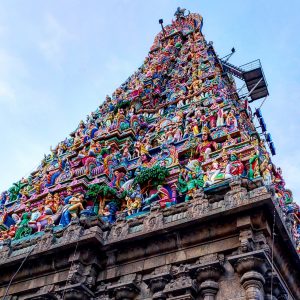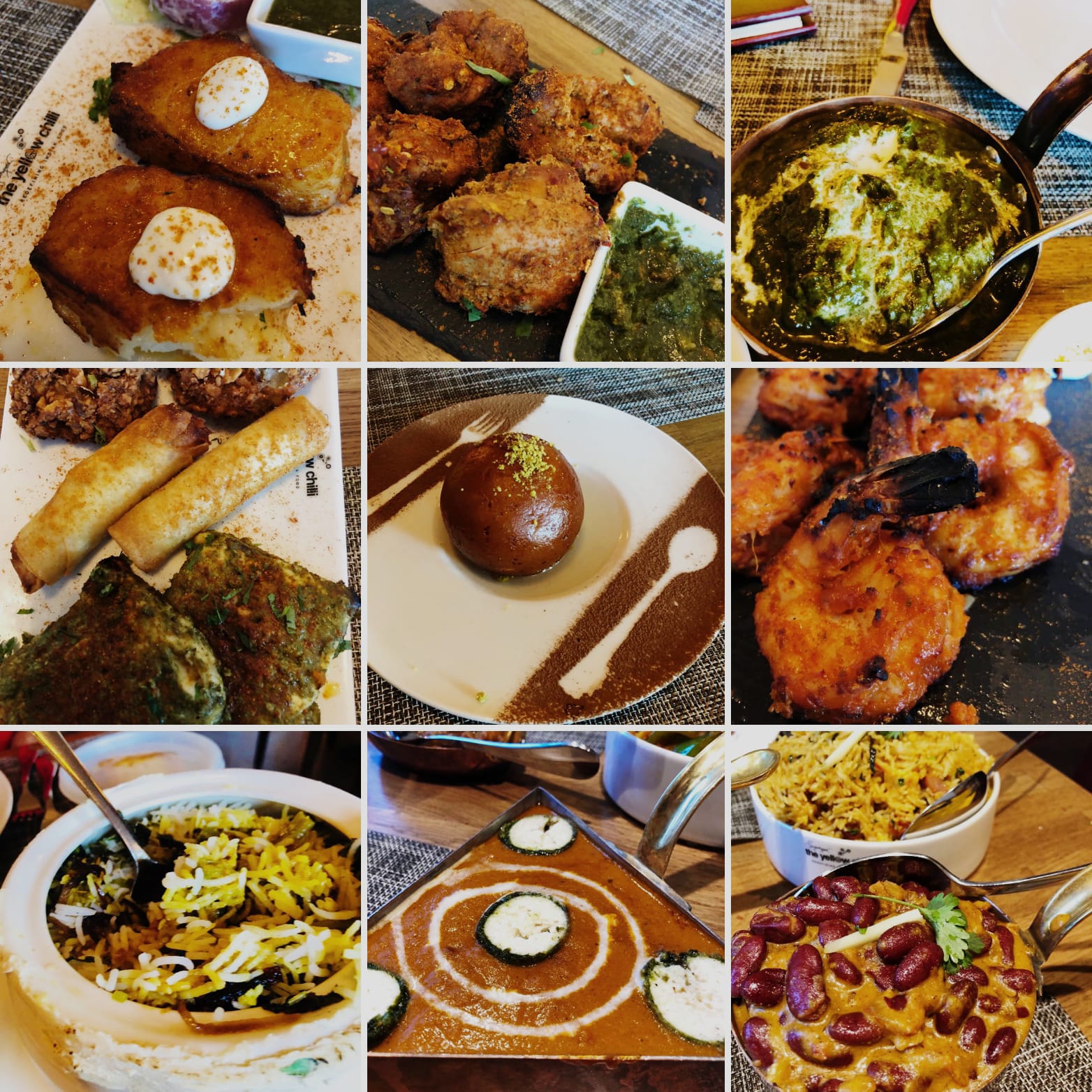The Amar Chitra Katha comics are unmatched for their altogether superb rendition of India’s history, mythology and folklore. Their wealth of stories holds much in store for all manner of topics under the sun. As we resume our musings on infinity, it is to this treasured collection that we return, for one more tale of the emperor Akbar and his minister Birbal.
The Sycophant’s Praise
One fine day, a wandering minstrel, hard of circumstances, came calling to Akbar’s court, requesting to sing for the emperor. Permission granted, the bard was soon in his element, entertaining all present with his paeans of fulsome praise for the emperor, extolling him at one point as even greater than God. Ridiculous as it was, the melodious flattery certainly succeeded in buttering up the emperor, who presently dismissed the sycophant with a generous reward for his efforts.
Having sent the man away, Akbar noticed that the sharp witted Birbal, always known to call a spade a spade, had remained silent throughout the performance, not raising as much as an eyebrow at the overly exaggerated praise. On the contrary, Birbal had even nodded mildly at the ridiculous line of the emperor being greater than God! ‘Tell me how in God’s world can that be true’, Akbar now prodded his minister.
The best of emperors can be whimsical, and however high they may hold you in regard, Birbal knew he was only one mistake away from being expelled from court or worse, if he so much as made a single careless slip of the tongue. But Birbal was also a master of thinking on his feet, and sure enough, had a quite precocious answer up his sleeve.
With the look of a teacher indulging his favorite pupil, the witty minister told Akbar that the sycophant was indeed correct in one specific, if rather narrow way. If Akbar wished to banish a man from his kingdom, all he had to do was to issue a royal decree to deport the man for good. But if the Lord of the whole wide Universe wanted to do the same thing, where was it that He could banish anyone to?
Akbar was both impressed and grateful for how tactfully Birbal had opened his eyes, delivering a nuanced lesson in humility, but with no humiliation whatsoever. With this clever response, Birbal had also juxtaposed physical and metaphysical infinities quite artfully, blending them into the same conversation. But this little story can also reveal a lot more to us about finitude and infinity.
Glimpses from Finite
In the nineteenth century novel, Sartor Resartus, Scottish philosopher Thomas Carlyle speculates on our perception of the universe.
‘We sit as in a boundless Phantasmagoria and Dream-grotto; boundless, for the faintest star, the remotest century, lies not even nearer the verge thereof; sounds and many-colored visions flit around our sense; but Him the Unslumbering, whose work both Dream and Dreamer are, we see not; except in rare half-waking moments, suspect not…’
The vastness of infinity can overwhelm the human mind, so much so that we are all pretty sure there’s nobody who has actually ‘seen’ infinity. Hold that thought for a moment though, convincing as it may be. It turns out that anytime we see a physical object (or envision something in the mind’s eye, like the extent of Akbar’s kingdom) we see it as outlined by its boundaries. No form can be seen without cognizing its boundary, and thereby its background context. That background, which is the space surrounding the object, is by its very nature limitless, even while it may include other encompassing objects or boundaries.
Such would be the case for example with concentric circles, where the space beyond the outermost circle is boundless. The background, which we cannot help seeing whenever we apprehend a particular form, is essentially unbounded, and infinite. We might not notice or pay attention to it, but it is always there.
Even in our finite vision, infinity thus turns out not to be some inaccessible and fanciful abstraction, but sitting right under our noses, so to speak. The background of space is not so much hard to see, as it is impossible to avoid. While our finite vision cannot survey all of it in one glance, one is still always catching a glimpse of infinity.
This reasoning can apply not just to ‘substantial’ objects, but also to something as insubstantial as a rainbow, whose boundaries are most easily seen as merging into the endless expanse of the sky.
You can also apply it to intangible things like emotions. Consider an outburst anger or an upsurge of joy. When we are aware of these, we are ‘seeing’ them spring up, out of the blue as it were, from the skylike backdrop of awareness. We might also notice they have a temporal beginning and end, set against the infinite expanse of time.
With a little leap of thought, such reasoning can extend to theology. The question of boundaries here might be framed as ‘where do I end, and where does God begin’.
With regard to metaphysical boundaries, we are really talking of spheres of influence. As human beings, the outer personality of our physical form is enfolded by layers of our subtle bodies and mind, to constitute our personal aura. For most people, the human aura extends for a few feet beyond the physical body. In the case of evolved beings though, their auras can be seen by clairvoyants as extending out for miles in the shape of a radiant sphere, charged with the power to influence others with healing and blessings.
Similar is the case we find in astrology, where the auras of the planetary angels extend and overlap as spheres which intersect, and to some extent interpenetrate each other, bringing varying kinds of energetic influences over time to chart human destiny. Ruling above all of this is the Aura Supreme, of the Lord of the Universe, the akhanda mandala or unbroken sphere, penetrated by none, but penetrating All…the benevolent sphere of universal love which influences all others, but is influenced by none. This is the sphere of metaphysical infinity, the sphere from which no one can be banished ever.
Perhaps Ramakrishna, that much loved spiritual genius of Bengal, said it best to the skeptical young Narendranath Dutta who went on to become the world famous Swami Vivekananda. To Naren’s insistent question of if he had seen God, Ramakrishna responded with a dazzling conviction ‘Yes, I see Him, only a little more clearly than I see you!’ The boundaries that Ramakrishna’s vision transcended, of course, extended far beyond Vivekananda’s physical form. It was a timeless Presence that Ramakrishna saw naturally emmbodied in the young man, who was hugely taken with the saint’s startling reply.
Inter Being
Even if we ignored the background, we cannot miss the object itself. The great Vietnamese Zen master Thich Nhat Hahn reveals with astonishing clarity how just contemplating the finite can reveal the universal, in as much as a single sheet of paper.
‘If you are a poet, you will see clearly that there is a cloud floating in this sheet of paper; Without a cloud, there will be no rain; without rain, trees cannot grow, and without trees, we cannot make paper. If we look even more deeply, we can see the sunshine, the logger who cut the tree, the wheat that became his bread, and the logger’s father and mother. Without all of these things, this sheet of paper cannot exist. In fact, we cannot point to one thing that is not here – time, space, the earth, the rain, the minerals in the soil, the sunshine, the cloud, the river, the heat, the mind. Everything co-exists with this sheet of paper. So we can say that the cloud and the paper ‘inter-are’. We cannot just be by ourselves alone; we have to inter-be with every other thing.‘
/Thich Nhat Hahn, ‘The Heart of the Prajnaparamita Sutra‘
Whether we look at an object, or whether we look at its background, we are thereby always glimpsing the infinite. This inter-being that Thich Nhat Hahn talks of is vast and cosmic in its scope, extending all the way up to the Unbroken Spere of the akhanda mandala. It is perhaps what Blake alludes to, when he penned those lovely lines…
To see a World in a Grain of Sand
And a Heaven in a Wild Flower
Hold Infinity in the palm of your hand
And Eternity in an hour
Measure(less) Mind
Mind is wont to measure and size up everything. Children obsess about their heights, adults about their weights and girths, including if the zero of the weighing scale has been fairly calibrated. Today’s trending measures include BMI, cholesterol, and the number of steps as reported by Fitbit or a less fancy pedometer. We also have measures, albeit subjective, for beauty and proportion, homely vs comely, and in short, for all things (and creatures) great and small.
But if there is one thing the mind cannot get the measure of, it is of itself, it’s own extent, and we cannot even be sure if there is a limit to it.
At the back of all preoccupation with the limited is the fascination for the limitless, which in psychological terms is the yearning for some sort of unrestricted freedom. Nobody has ever seen infinity, but every one of us had the taste of being bound and restricted, and therefore by reflex, the yearning for something free and unbound. We have also the sense that this yearning would not be there unless it was in some manner capable of being fulfilled, though we may not know exactly how. Mind suspects intuitively that the infinite is concealed by the finite, the extraordinary lurks under the veil of the ordinary, and the limitless is shrouded by the limited.
Infinite Vision
The finite can catch a glimpse of the infinite, but what would it be to gaze at infinity directly, without the intervening presence or support of the finite? This is the subjective experience of pure infinity, pristine and unconditioned, one beyond the reach of any mental gymnastics. This is the gazing into Absolute, all of it at once. As the Zen saying goes, it is ‘to swallow the Pacific Ocean in a single gulp’. How can a finite mind manage it? The approach has to be one not of brute force, but strategy. This is the approach of subtle mirroring.
Perhaps gazing deep into the sky of outer space, with not even the stars to intervene, might bring us close to this experience. The mind, after all, is well known to take on the contours of the objects it is focused on.
Now just like if you kept travelling East you might at some point find yourself in the West, if you kept gazing into boundless space, your attention might at some point be thrown back into itself, doing an about turn as it were to go deep within. Gazing into all-encompassing outer space, the mind’s inner spaciousness then comes to the fore. A gap opens up into the mind’s inner sky, the window of Zen’s ‘satori’, bridging outer expanse of space with inner expanse of mind into the Celestial Everywhere.
In like manner, if one looked into the present moment deeply enough, mind’s sense of present time can open up into the Timeless Now, in whose archives everything even of the future happened long ago, so that this Moment is forever new.
Diving deep, beyond reach of words and thought, mind ultimately merges in the liberating expanse of its very own nature, of unconditioned awareness. In such awareness might be revealed how all the outer infinities, of our endless inter-being, of infinite space, of eternal time, and the all-encompassing love of the Unbroken Sphere, are but reflections of mind-nature, that of pristine freedom.
Such is the state of samadhi, the unbounded infinity of the wise. Shankara, most celebrated of India’s mystics, describes it eloquently. ‘Thou from whom all words recoil’.
While from his vantage point of the Dream-grotto, Thomas Carlyle echoes a similar understanding…
‘Think well, thou too wilt find that Space is but a mode of our human Sense, so likewise Time; We are – we know not what; Light-sparkles floating in the aether of Deity!’
The Deity of the Celestial Everywhere and Timeless Now.
Looking From Infinity
Glorious as infinte vision might be, what then is the value of the finite?
Just like with a shift of perception, we saw that the finite cannot avoid the infinite, could the flipside be true, that from the infinite eye, it would be impossible to avoid the finite?
From the North Pole, all directions point South. Wherefore from infinity, we might ask. How would the finite appear to the vision and gaze of the infinite?
The answer, truly speaking, can only be found in a consciousness that has tasted of satori or samadhi at least once. But that does not stop us from some creative speculation.
The vision of the finite that we may be privileged to see, from the wakefulness of infinite vision, may not necessarily be one of physical boundaries, but one of boundaries of consciousness.
The finite may appear as finite, but not necessarily in set and rigid contours as before. The boundaries may be like that of the spectrum of the colors of light, with each microtone of color merging seamlessly into the next micro-wavelength of radiation.
So it might be with levels of consciousness, from crystals and minerals, to plants and animals, human beings and stars, all the way to the brilliance of divine consciousness. All in all, the world of finitude appears much like a dreamlike vision, a smorgasbord of colors of every possible hue in consciousness. Speculations on the identity of the dreamer, if there is indeed one, or if dream and dreamer are one, and so on, are a wholly different philosophical cup of tea. All we know for sure is those who have chanced upon such a vision never stop speaking of its endless beauty.
From finite gazing (if unknowingly) into infinite, to infinity’s immaculate gazing at itself, and then back to looking ‘out of infinity’ in fresh colors, we have mirrored the path of the wise, who straddle finite and infinite, the dance of Relative and the play of Absolute Reality, with consummate ease.
These are the seers of Truth, the Rishis of every land and epoch. It is said of these noble ones, that immersed in the thrall of the Absolute, their all-pervading compassion never loses touch with the Relative. And immersed in the dance of the Relative, their all-pervading wisdom never loses sight of the Absolute. Theirs is the infinite kingdom.
So what of infinity as it relates to our own roamings, in the pursuits and concerns of life? There is this sense we’ve all had, at some point or other, that life is a journey, be that journey a wandering or a homecoming. The ideas of roaming, space and direction can be viewed from the perspective of metaphysics, but can also be complemented by some interesting insights from the world of arithmetic and geometry.
Our next blog post will embark on these journeys (in)finite.












